Recent Articles
Popular Makes
Body Types
2017 Chrysler Pacifica Test Drive
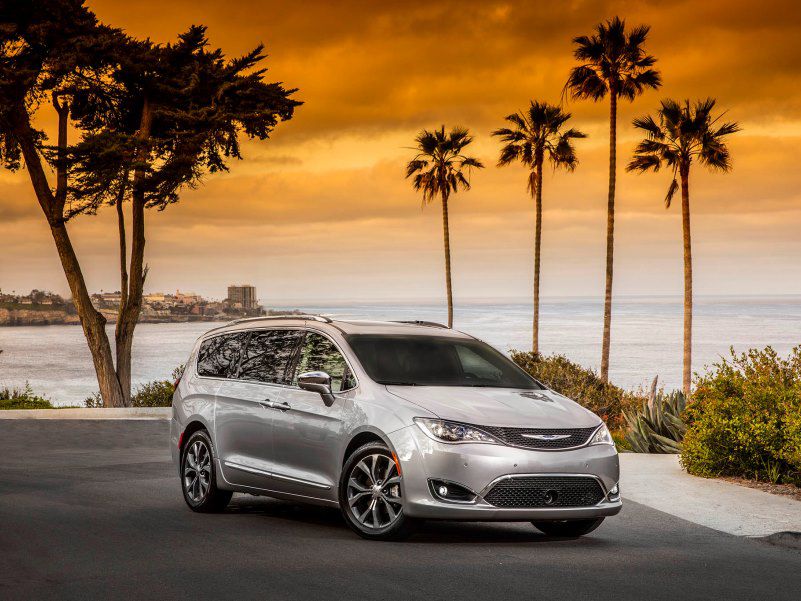
2017 Chrysler Pacifica 001 ・ Photo by Chrysler
Yeah, we’ve heard it all before: Friends don’t let friends drive a minivan. The unquestioned, absolute best vehicle for easily and efficiently transporting wee folk, pets, even seniors and their big, clunky stuff in carlike comfort has an image problem. However blissfully domesticated you might be, a sticky beige mom-bomb awash in Cheerios, chew toys, and scrunchies may not be the look you’re going for. We get it.
Chrysler does too, and while no one is likely to see a video clip of James Bond behind the wheel of one mixing it up with Uzi-toting Ninjas on superbikes, this is where we flash a sultry sweet-light, low three-quarter front shot of the 2017 Chrysler Pacifica on the screen and cue the sound of a record player arm screeching across vinyl. Snap! Not only does the new Pacifica look less minivan-like, it also drives less like one.
Status Upgrade
No, the new Pacifica isn’t the Viper of minivans or even the Hellcat of minivans. Who started that rumor? But remember when Chrysler and Daimler-Benz “merged” a couple decades ago and everyone thought the Mercedes-Benz quality “feel” would trickle down to Chrysler products? Well, that didn’t happen, but the impression you get after spending just a few moments inside the new Pacifica is that of a status upgrade, only this time the leap forward is real and entirely homegrown by FCA.
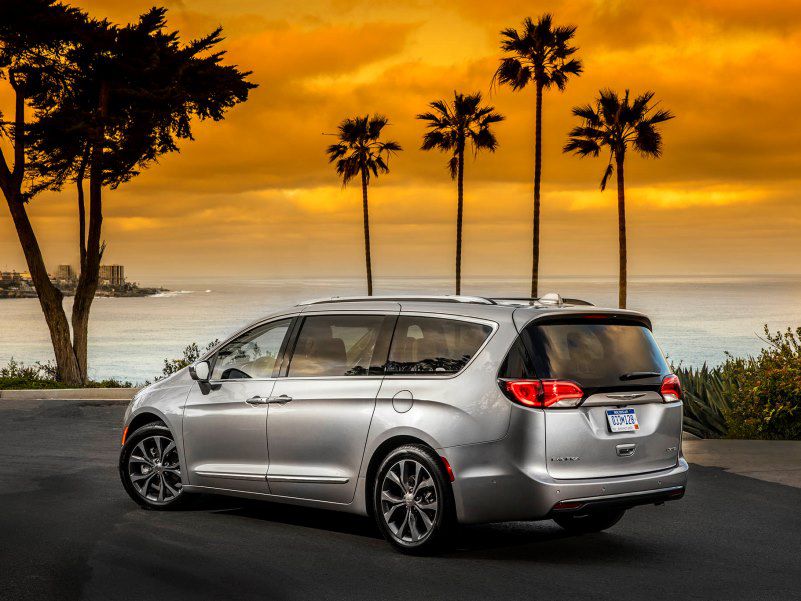
Photo by Chrysler
Strong, Silent Type
As with other successful new designs, it starts with a stiff body. Typically, a minivan’s signature feature — big, wide sliding side doors — is also its biggest structural weakness, the large openings allowing the body to twist and flex. But Chrysler took its killer app — its fold-into-the-floor “Stow ‘n Go” second-row seats — and built reinforced floor wells around them that enhance body stiffness. There’s also significant use of structural adhesives along major weld joints, and the result is a minivan that feels premium sedan stiff: No creaks or groans, even when angling down a steep driveway ramp.
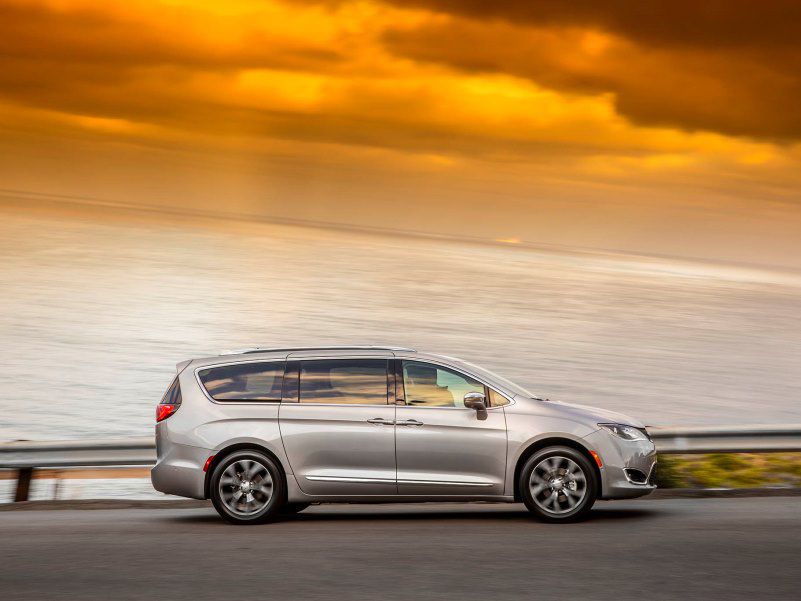
Photo by Chrysler
Zen Qualities
And nary a wiggle, buzz, or rattle when the new Pacifica is put in motion. It’s noticeably silent, even over coarse or poorly-maintained road surfaces. Aside from the Zen qualities of peace and quiet, there isn’t more to be heard from the outside. That’s a good thing when the driver needs to keep tabs on the shenanigans from the aft quarters. Front strut isolators help tamp down front-end impact (lumber) sounds. Acoustic liners in all four wheel-wells snuff road sizzle and an acoustic laminated windshield turns down the volume on outside traffic noise. Active noise cancellation minimizes unwanted low-frequency drivetrain booming by using the van’s sound system to create opposing frequencies. As a result, the engine can be operated at lower speeds when highway cruising, saving fuel without the unwanted noise. Hear that? No? We didn’t either.
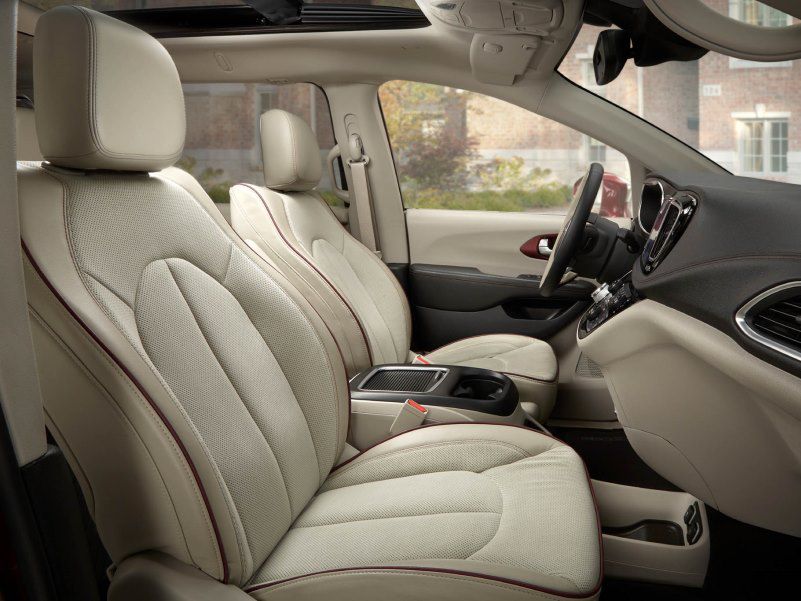
Power to Weight
The 3.6-liter Pentastar V6 used in the Pacifica gets boosted to 287 horsepower, tops in the minivan segment. A fairly aggressive throttle calibration, combined with a lower first gear and shorter final drive ratios of the Pacifica’s new 9-speed automatic transmission, enables snappy stoplight launches. And the wide-ratio spread of the 9-speed means the Pacifica is rarely caught flatfooted around town under varying road speed and traffic situations. The Pacifica’s wider gear spread and fairly deft gear changes allow the V6 to operate more efficiently and help it earn an 18 mpg city/28 mpg highway EPA rating, improved from the 2016 Town & Country 6-speed’s 17 mpg city/25 mpg highway sticker.
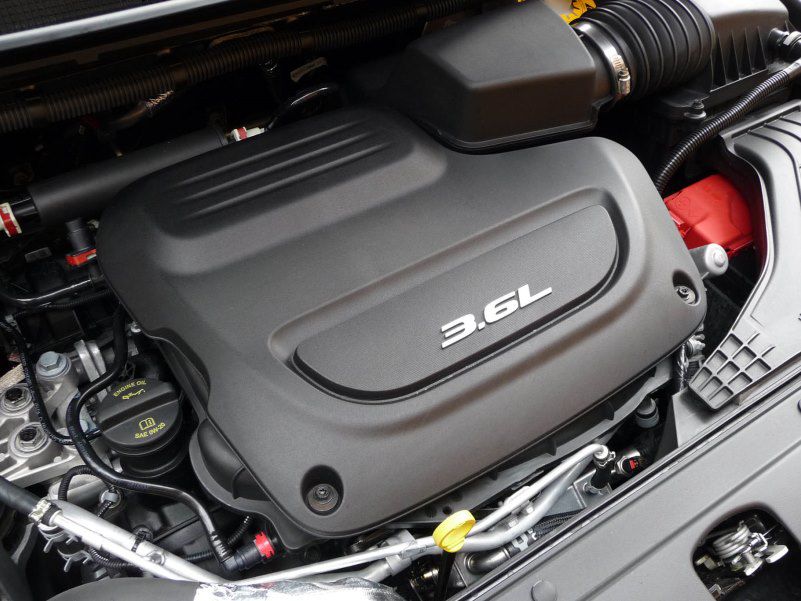
Photo by Chrysler
Diet
The Pacifica also sheds some 200 pounds despite the added structure, aiding both performance and efficiency. And even though that’s less than 5 percent shaved from a 4,500-pound minivan, every little bit helps. Key enablers are aluminum sliding-door outer skins and a magnesium liftgate structure. And underneath, aluminum front suspension control arms, shock mounts, and other lightweight chassis components lighten the load.
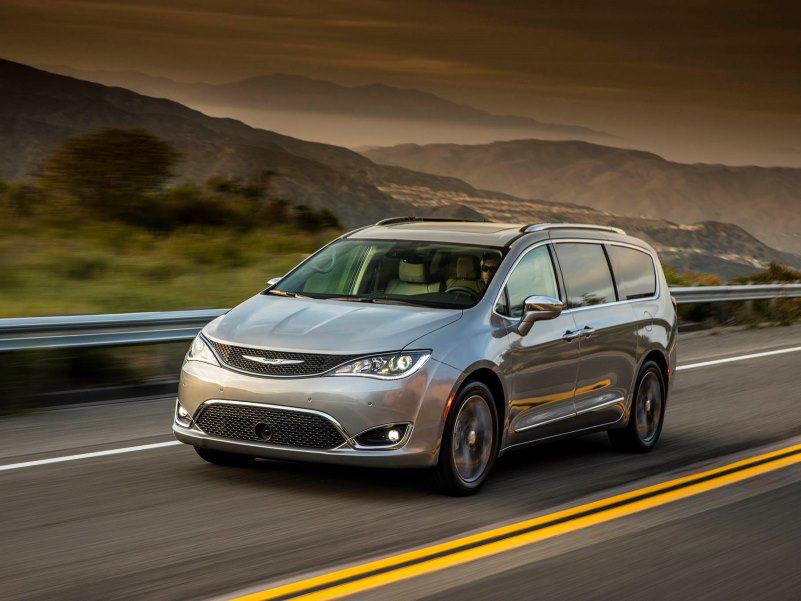
Photo by Chrysler
Field Trip
We suspected Chrysler might have improved chassis dynamics to show us when the first leg of our test drive took us down Ortega highway, a two-lane blacktop favorite with superbikers that climbs from near sea level to 2,000 feet over the Saddleback Mountains while winding and twisting 30-plus miles between San Juan Capistrano and Lake Elsinore, California. While the second row enjoyed SpongeBob Squarepants on one of the two 10-inch Uconnect theatre screens, behind the wheel this driver was nailing apexes and getting acquainted with the Pacifica’s new electrically-boosted dual-pinion steering. Feedback could be better and the ratio is not as quick as last year’s Town & Country, yet it’s well-weighted and precise, making it a breeze to place the Pacifica exactly where you want it. The Pacifica goes where it’s pointed without drama; algorithms in the system can minimize torque steer and the camber-changing effects of high-crown roads. An all-new independent twist-blade rear suspension takes some of the credit here. New rebound springs in the rear shocks help reduce body pitch and roll. Meatier 18- and 20-inch tires, newly added to the roster, give a more planted look and feel. The Pacifica’s 4-wheel disc brakes inspired confidence too, with good top-of-pedal response and linear control.

Photo by Fiat Chrysler Automobiles
Stow ‘n Go
Despite the swoopy new sheetmetal and the lower, more planted stance, the 2017 Pacifica is actually a smidgeon taller and wider than the Town & Country it replaces, so passenger and cargo space are both increased a bit — and with all the seats folded, a 4×8-foot sheet of plywood still fits inside. New for 2017 is an optional middle second-row seat that fits between the Stow ‘n Go seats. Comfort for these is improved as well with softer foam and a more conventional bottom cushion angle. And when the Pacifica is equipped with power front seats, there’s a new Stow ‘n Go Assist button to move the front seats forward just enough to give space to fold the Stow ‘n Go second-row buckets into the floor wells. That’s an eight-step process if you remove and reinstall the floor mats, but it’s easy once you get the hang of it. To get nothing but floor in the second row, the optional middle seat doesn’t stow underfloor but can be unlatched and hoisted out. At 37 pounds it weighs about as much as a big bag of birdseed.
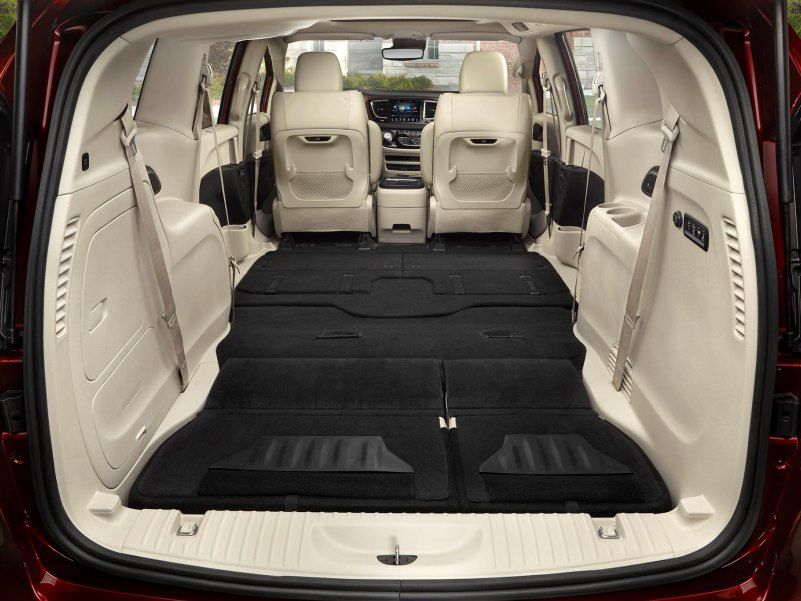
Photo by Chrysler
Safety Tech
As with many other new family vehicles, the 2017 Pacifica is available with the latest safety tech. We’re big fans of the standard backup camera, the blind-spot and rear cross-traffic monitor systems, and rear park assist with stop (standard on Touring-L and above trims) as well as the optional surround view camera. More advanced systems such as adaptive cruise control with stop, parallel/perpendicular-park assist, and lane departure warning and forward collision warning — both with driver assist — are also available but not as useful in day-to-day driving.
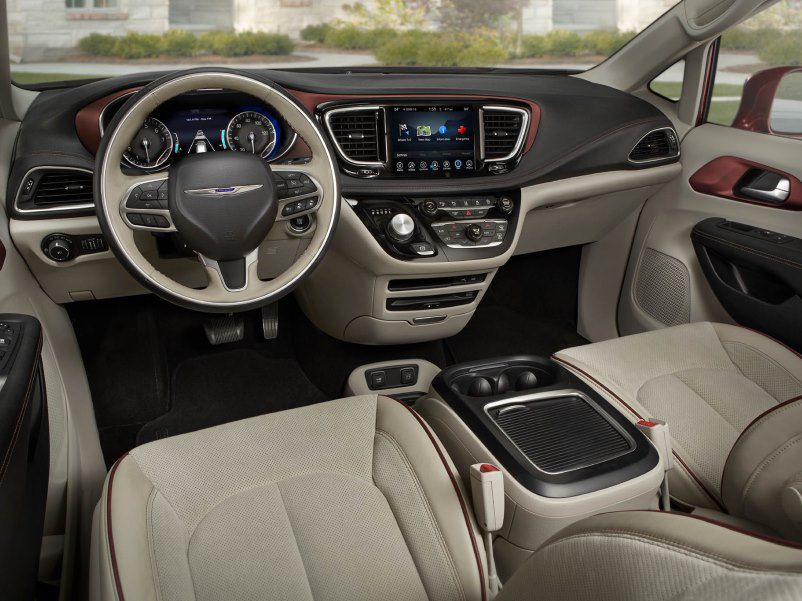
Final Verdict
The 2017 Pacifica is lighter on its feet than last year’s Town & County. It’s quieter, feels more solid, and the interior has a pleasant, modern design with upscale-looking materials. Keep that in mind, minivan pilots. No matter how selfless and altruistic your intentions are in giving mobility to those in the second and third rows, you don’t necessarily have to leave your love for driving in the garage when slipping behind the wheel of the new Pacifica.
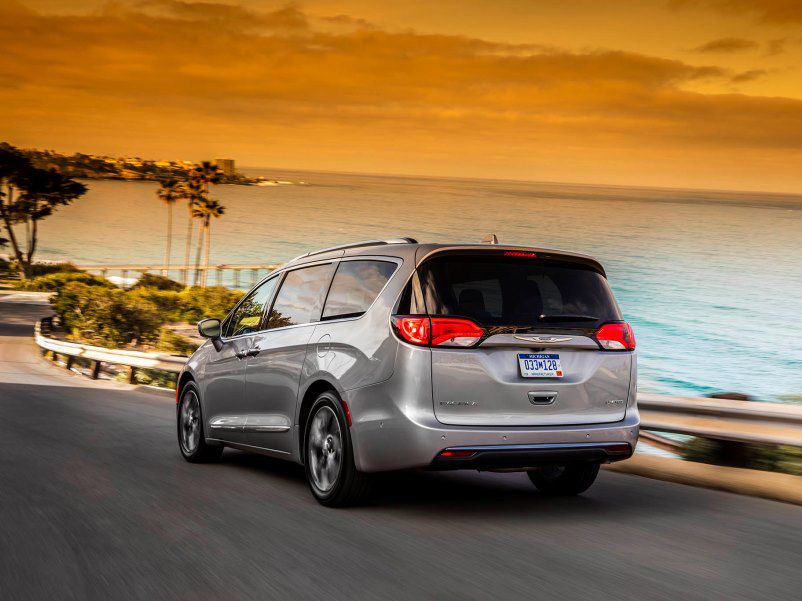
Photo by Chrysler